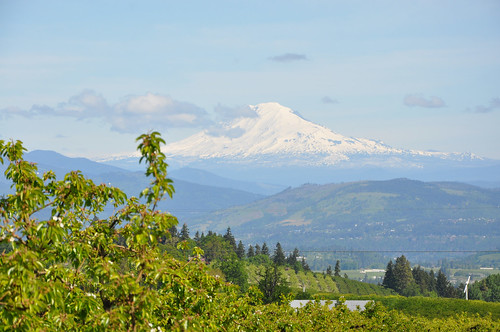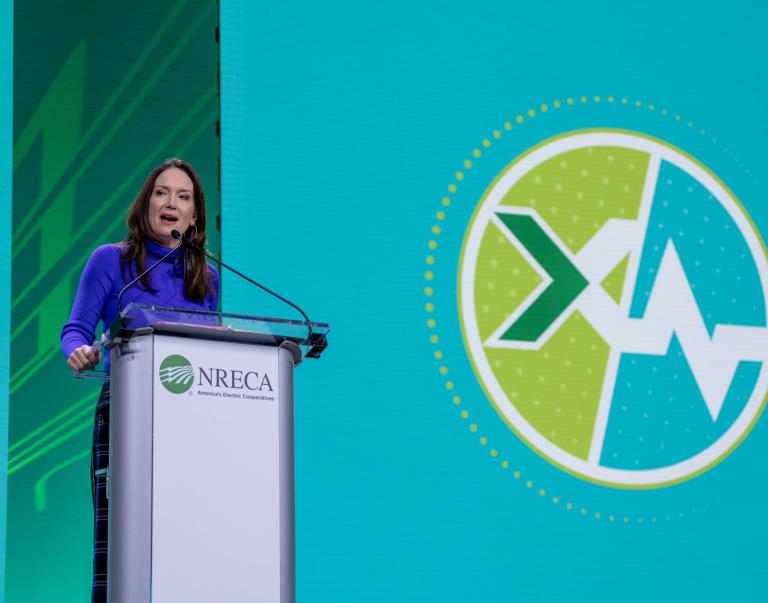
"The burn box lets us burn during the summer months, when normally there’s a ban. It’s a useful tool. It burns really clean.” -- Cindy Collins
See more photos from the Hood River Air Quality Project on Flickr.
When Cindy Collins wakes up in Oregon and looks out at her 46-acre orchard—with Mt. Adams towering in the background—she feels like she’s at summer camp.
“Most of us living here in the valley can’t imagine a prettier place,” Cindy said. “I just really appreciate the peace and the beauty of the valley. It’s like I’m at summer camp 365 days a year.”
Like her neighbors, Cindy believes in preserving the beauty and vitality of the Hood River Valley. That’s why she’s teaming up with 20 fruit growers to adopt cleaner ways to operate their orchards.

Over the last two growing seasons, Cindy and other fruit growers in the valley are using an air curtain burner—commonly referred to as a burn box—to safely and cleanly burn their orchard pruning wood.
The burn box was purchased in 2014 with a Conservation Innovation Grant funded by USDA’s Natural Resources Conservation Service, in partnership with the Columbia Gorge Fruit Growers and Hood River County.

“Last year we burned all of the large pruning wood taken from the orchard,” said Cindy. “And then this year, I removed a block of mature cherry trees, so we burned all the wood there with the exception of the stumps, which are a little too big to go into the burner.”
The burn box produces almost no smoke and significantly reduces the amount of airborne particulates. In 2015 alone, Hood River fruit growers eliminated about 1.35 tons of particulate matter from entering the air by using burn boxes instead of open-pile burning.
“A fan recirculates the smoke, so the particulate matter burns, then re-burns,” said Carly Heron, NRCS district conservationist. “So everything is being cleanly burned, and there’s no smoke, no particulate matter, nothing being released to the air—just like a really clean EPA-burning wood stove.”
“The burn box lets us burn during summer months, when normally there’s a ban,” Cindy said. “It’s a useful tool. It burns really clean.”

As part of the NRCS grant, Cindy and her neighbors fill out a data sheet each time they use the burn box. NRCS and the Columbia Gorge Fruit Growers use the data to track usage and the resulting reduction in air pollution. The data will also help determine if a larger scale, county-wide project could be viable.
“It’s really amazing when you finish burning,” Cindy said. “We had trailer loads of wood coming up to be burned. And once you’re done, there’s maybe just three or four inches of ash left on the ground. There’s very little left.”
Cindy is no stranger to NRCS. She bought her neighbor’s property in 2012 and worked with NRCS to convert to more-efficient irrigation systems. NRCS paid for a significant portion of the cost to install the system.
“NRCS has been great,” Cindy said. “They’re always looking for ways to help us protect the environment here in the valley, and they bring in money to support these efforts.”



